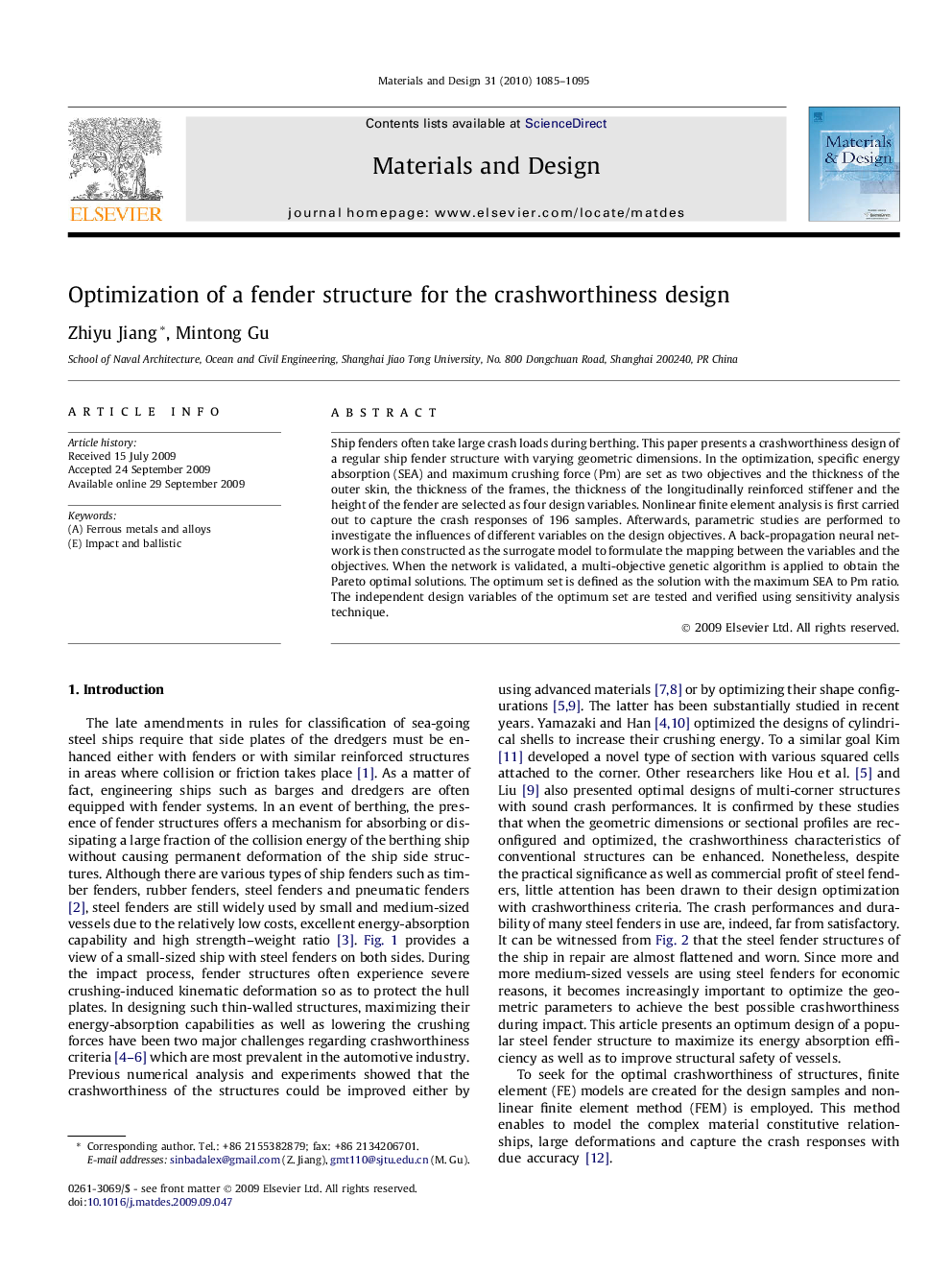| Article ID | Journal | Published Year | Pages | File Type |
|---|---|---|---|---|
| 832473 | Materials & Design (1980-2015) | 2010 | 11 Pages |
Ship fenders often take large crash loads during berthing. This paper presents a crashworthiness design of a regular ship fender structure with varying geometric dimensions. In the optimization, specific energy absorption (SEA) and maximum crushing force (Pm) are set as two objectives and the thickness of the outer skin, the thickness of the frames, the thickness of the longitudinally reinforced stiffener and the height of the fender are selected as four design variables. Nonlinear finite element analysis is first carried out to capture the crash responses of 196 samples. Afterwards, parametric studies are performed to investigate the influences of different variables on the design objectives. A back-propagation neural network is then constructed as the surrogate model to formulate the mapping between the variables and the objectives. When the network is validated, a multi-objective genetic algorithm is applied to obtain the Pareto optimal solutions. The optimum set is defined as the solution with the maximum SEA to Pm ratio. The independent design variables of the optimum set are tested and verified using sensitivity analysis technique.
